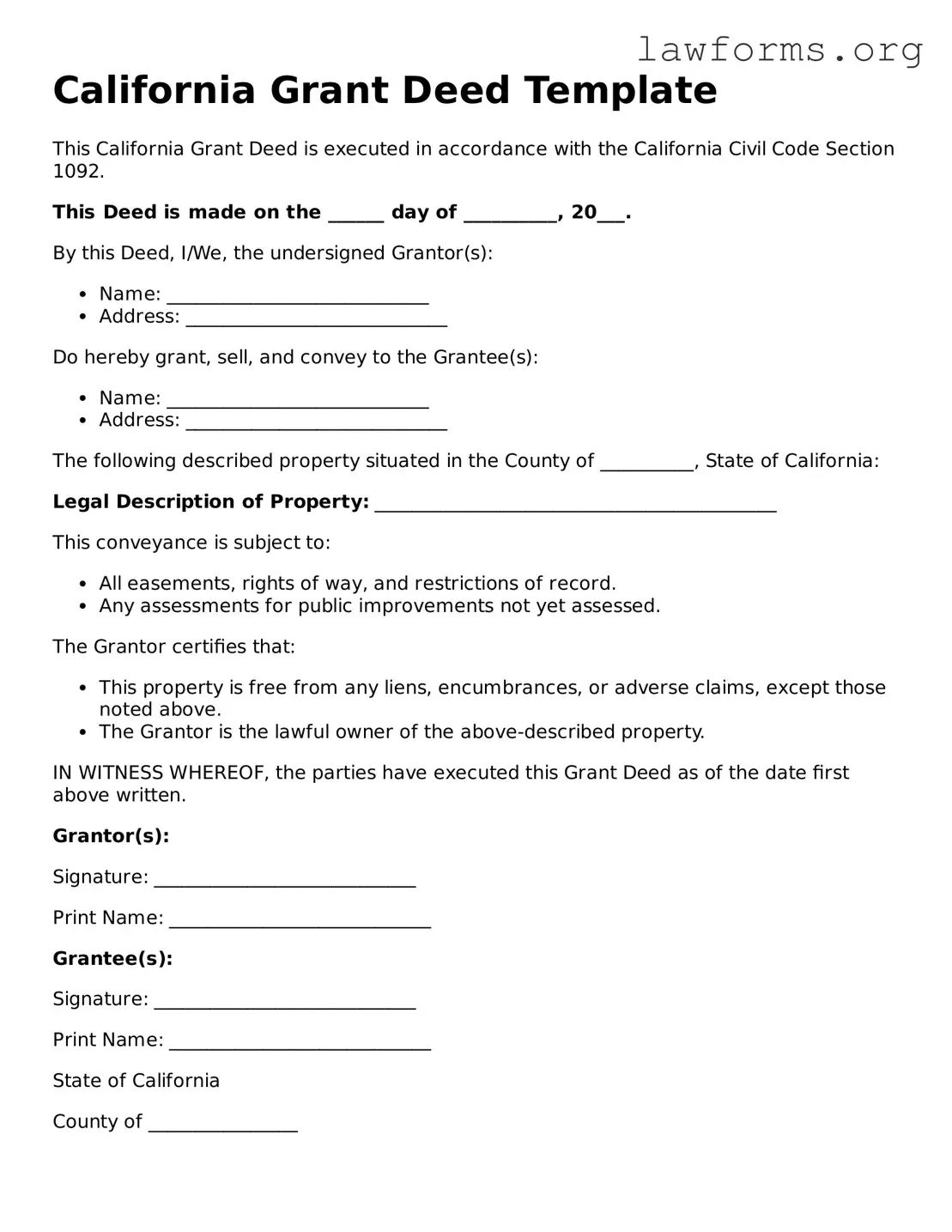California Grant Deed Template
This California Grant Deed is executed in accordance with the California Civil Code Section 1092.
This Deed is made on the ______ day of __________, 20___.
By this Deed, I/We, the undersigned Grantor(s):
- Name: ____________________________
- Address: ____________________________
Do hereby grant, sell, and convey to the Grantee(s):
- Name: ____________________________
- Address: ____________________________
The following described property situated in the County of __________, State of California:
Legal Description of Property: ___________________________________________
This conveyance is subject to:
- All easements, rights of way, and restrictions of record.
- Any assessments for public improvements not yet assessed.
The Grantor certifies that:
- This property is free from any liens, encumbrances, or adverse claims, except those noted above.
- The Grantor is the lawful owner of the above-described property.
IN WITNESS WHEREOF, the parties have executed this Grant Deed as of the date first above written.
Grantor(s):
Signature: ____________________________
Print Name: ____________________________
Grantee(s):
Signature: ____________________________
Print Name: ____________________________
State of California
County of ________________
On this ______ day of __________, 20___, before me, ____________________, a Notary Public in and for said State, personally appeared ____________________, known to me (or proved to me on the oath of ____________________) to be the person(s) whose name(s) is/are subscribed to the within instrument and acknowledged to me that he/she/they executed the same.
WITNESS my hand and official seal.
Signature: ____________________________
Notary Public, State of California
